40 Stunning Japandi Interior Design Ideas to Transform and Elevate Your Space
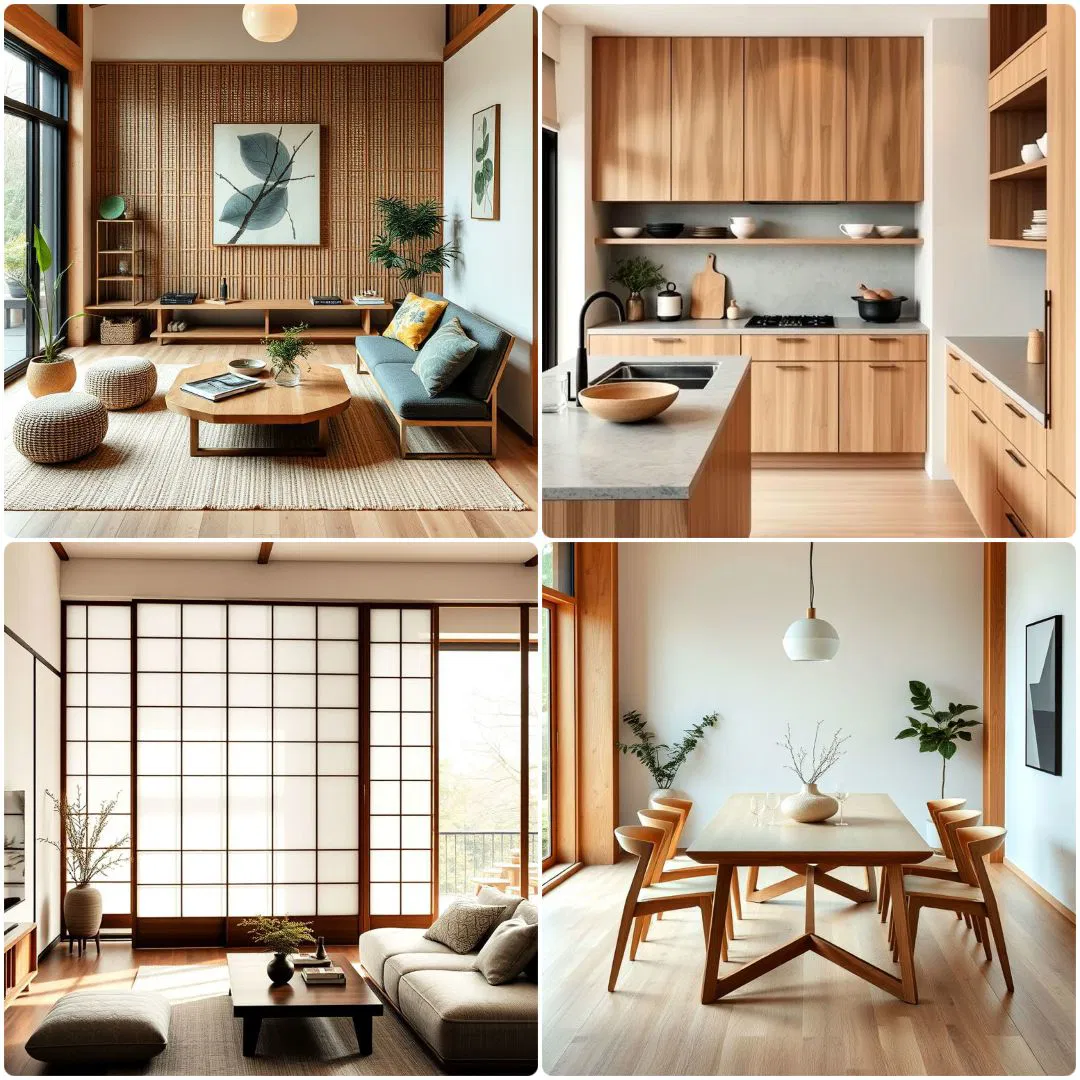
Japandi interior design masterfully blends the refined minimalism of Japanese aesthetics with the inviting warmth of Scandinavian style, crafting environments that radiate calmness and intentionality. Picture a residence where every detail fosters peace, featuring natural materials, streamlined forms, and soft, muted hues that coexist in perfect harmony. This design philosophy transcends mere decoration-it embodies a mindful lifestyle that values practicality, simplicity, and the charm found in imperfection. Explore these 40 innovative Japandi interior design inspirations to reimagine your home as a sanctuary of equilibrium, understated elegance, and enduring appeal.
1. Embrace Natural Wood Furnishings
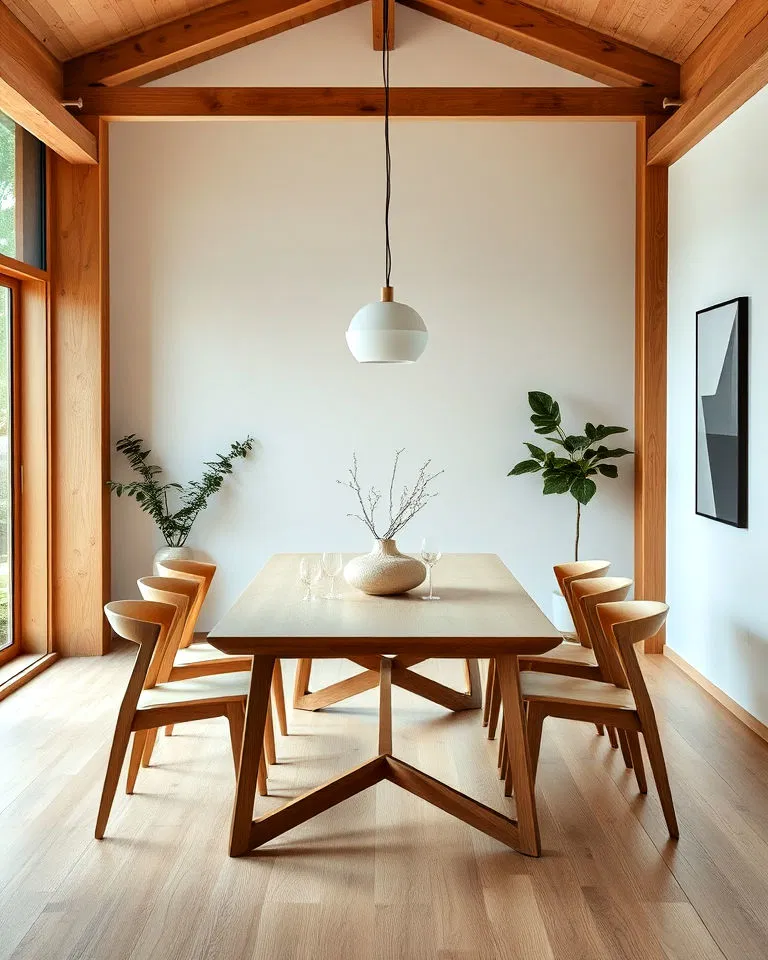
Wooden furniture crafted from natural materials like oak, birch, or walnut introduces warmth and tranquility essential to Japandi interiors. Select pieces with minimalist silhouettes and light to medium wood finishes to seamlessly merge Japanese restraint with Scandinavian comfort. Whether it’s a streamlined dining table or a simple bed frame, these furnishings anchor the room’s serene vibe. Complement them with soft, neutral textiles to enhance their inviting presence.
2. Opt for Soothing Neutral Color Schemes
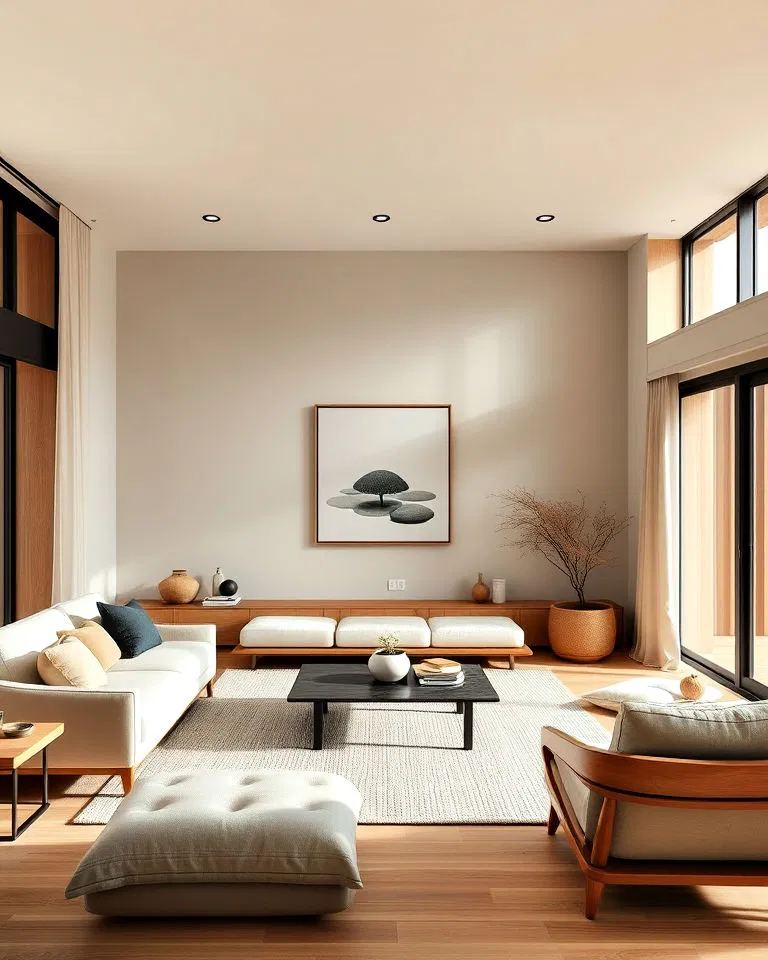
Japandi interiors thrive on a foundation of neutral shades-think soft beiges, creamy whites, gentle grays, and subtle earthy greens. These colors create a peaceful atmosphere that allows natural wood tones and minimalist decor to shine without overwhelming the senses. Introducing slight contrasts, such as charcoal accents or muted olive, adds dimension while preserving the overall calmness.
3. Incorporate Low-Height Furniture and Floor Seating

Drawing inspiration from traditional Japanese tatami rooms, low-profile furniture and floor cushions foster a grounded, intimate ambiance. Choose minimalist sofas, coffee tables, and chairs with simple designs, paired with plush floor cushions for added comfort. This arrangement encourages mindfulness and a cozy atmosphere, perfect for a Japandi-inspired living area.
4. Layer with Textured Rugs and Natural Fiber Mats
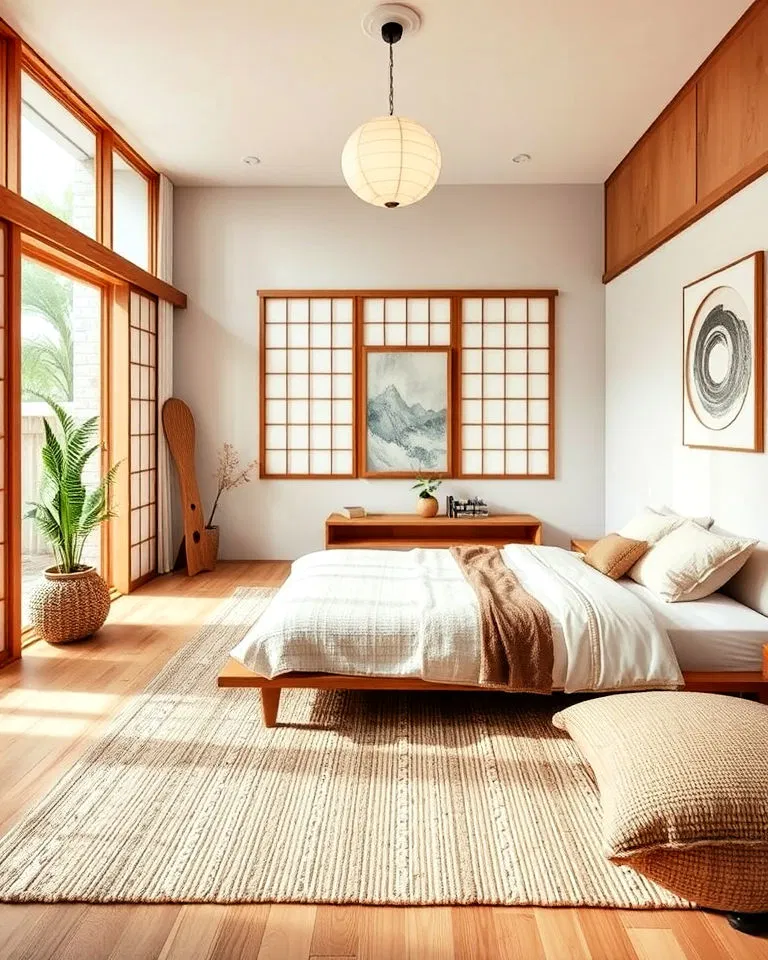
Introduce tactile warmth with rugs and mats made from natural fibers such as jute, sisal, or wool. These elements soften hard flooring and define spaces without detracting from the minimalist aesthetic. Their organic textures enrich the sensory experience, adding subtle layers of comfort and visual interest.
5. Utilize Sliding Shoji Screens for Elegant Partitioning
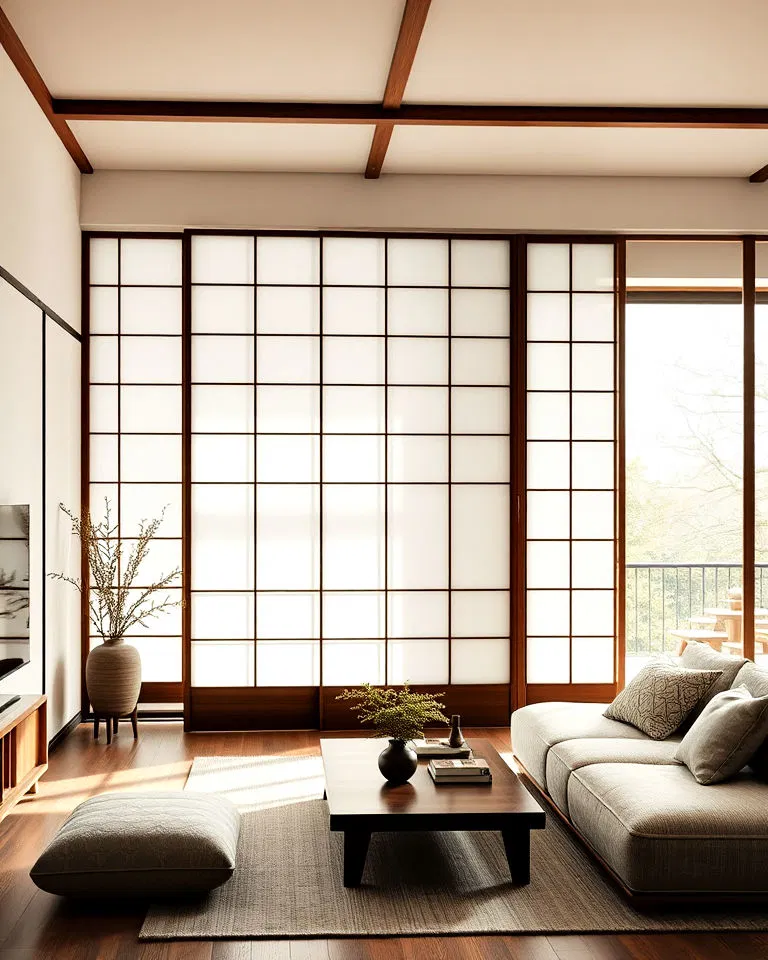
Shoji screens, crafted from wood frames and translucent paper, offer a graceful way to divide rooms while preserving openness and light flow. These sliding panels add a distinct Japanese flair and can be used to create privacy or accentuate windows. The gentle diffusion of light through the screens enhances the serene, airy quality characteristic of Japandi interiors.
6. Prioritize Clutter-Free, Purposeful Spaces
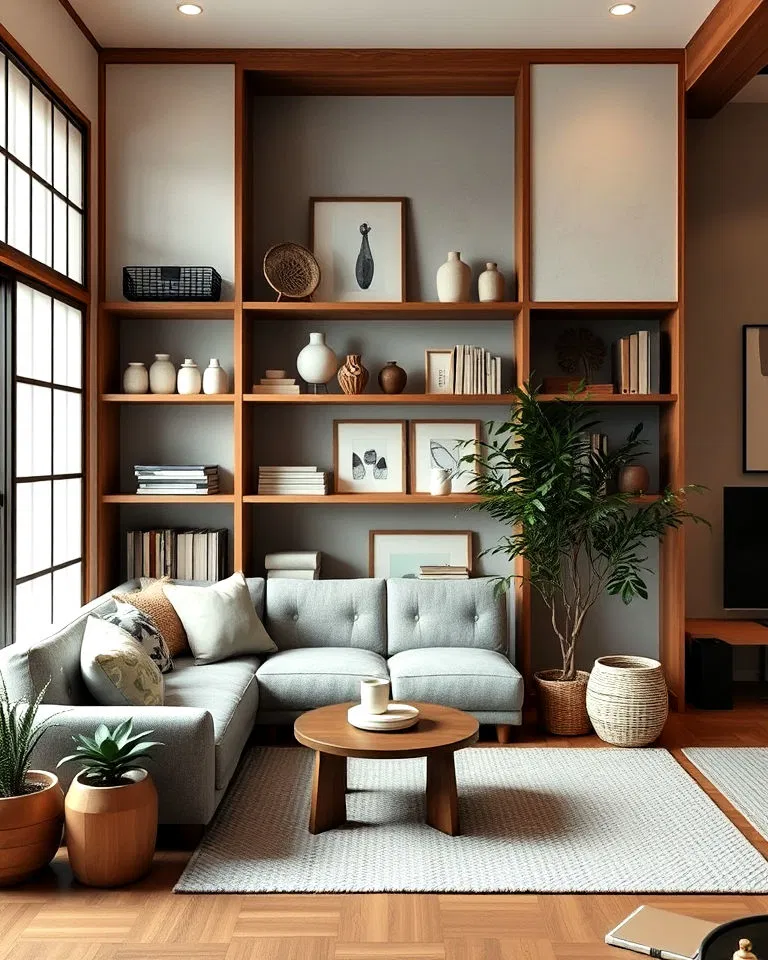
Central to Japandi design is the principle that every item should have a function. Embrace minimalism by limiting furniture and decor to essentials, utilizing open shelving and concealed storage to maintain order. This intentional reduction of visual clutter cultivates a spacious, peaceful environment that invites relaxation and focus.
7. Adorn with Simple, Handmade Ceramics
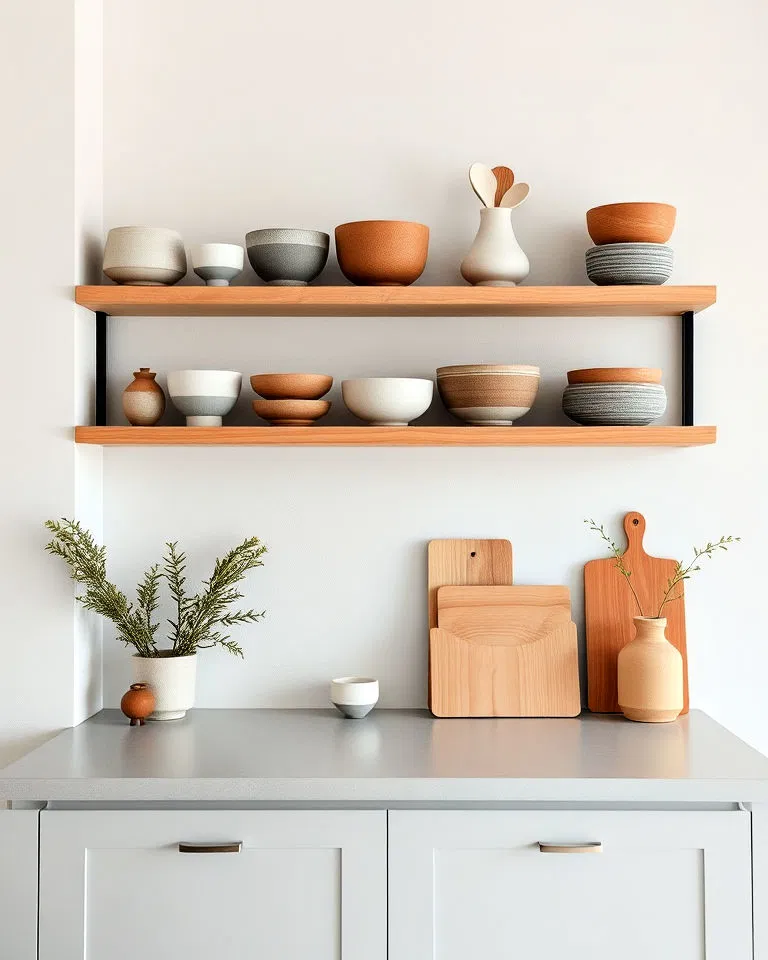
Handcrafted ceramics, such as understated bowls and vases with natural glazes in muted hues like terracotta, soft gray, or off-white, add a touch of artisanal warmth. These pieces embody the wabi-sabi philosophy-finding beauty in imperfection-and complement the clean lines and natural materials prevalent in Japandi spaces.
8. Integrate Indoor Plants in Minimalist Planters

Bringing greenery indoors enhances the Japandi connection to nature. Select easy-care plants like snake plants, ZZ plants, or bonsai trees, and house them in simple, neutral-toned pots made from clay, ceramic, or concrete. This approach adds freshness and vitality while maintaining the style’s understated elegance.
9. Incorporate Tatami Mats for Authentic Texture
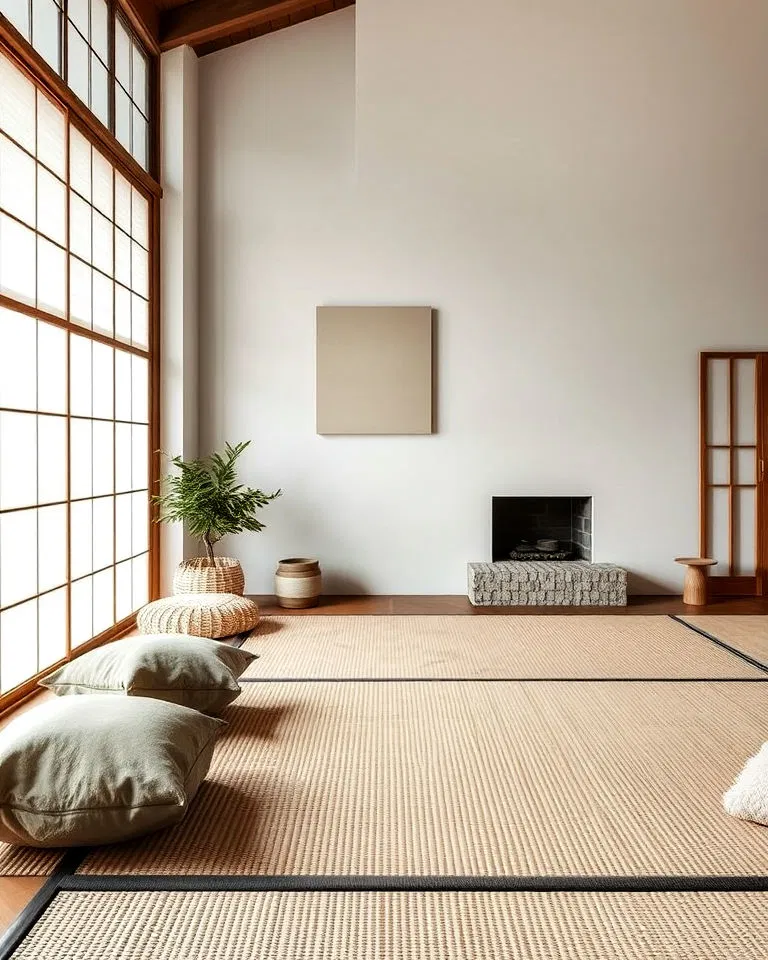
Traditional tatami mats, woven from natural straw, introduce warmth and texture to floors or seating areas. Their muted, earthy tones harmonize with Scandinavian simplicity, offering a timeless element that grounds the space and enhances comfort.
10. Choose Pendant Lighting with Sleek, Minimalist Profiles

Lighting is crucial in setting the mood of Japandi spaces. Pendant lights featuring clean lines and natural materials like wood or matte metal provide focused illumination over dining or seating areas. Their simplicity enhances the minimalist aesthetic while adding a refined touch.
11. Incorporate Subtle Wall Art for Visual Interest
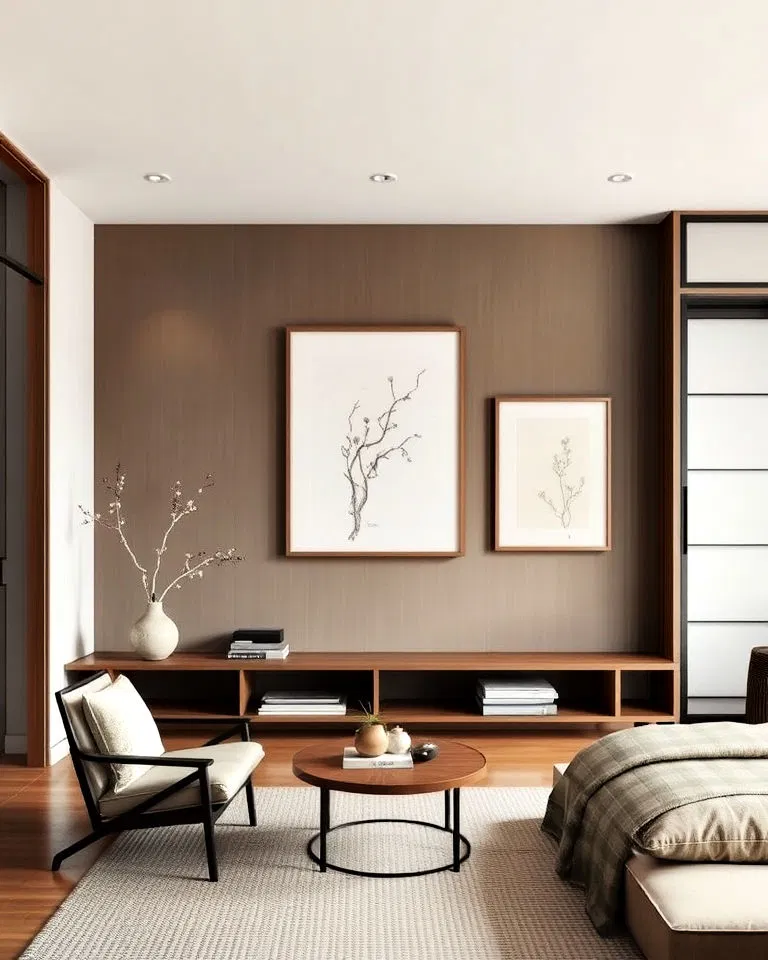
Enhance walls with understated artwork such as abstract prints or nature-inspired motifs in soft, neutral colors. Frames in natural wood or black metal maintain cohesion with the overall design. Alternatively, consider Japanese sumi-e ink paintings or Scandinavian line art to celebrate the fusion of cultures. Keep displays minimal to preserve balance.
12. Feature Open Shelving with Wooden Accents
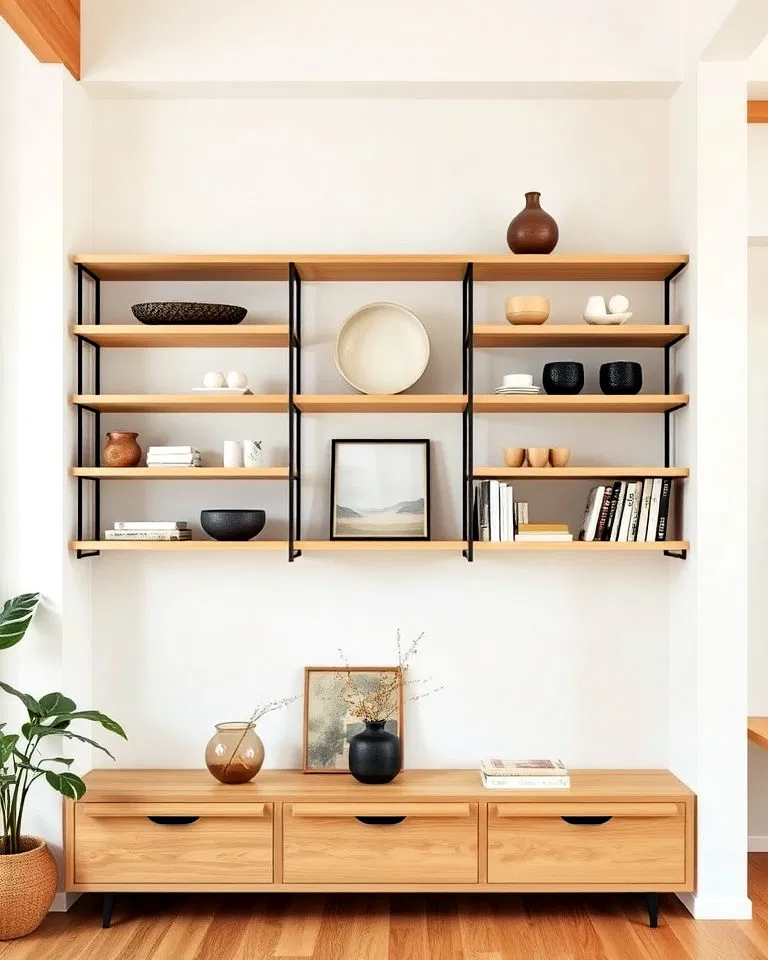
Open shelving units crafted from light or natural wood provide both storage and display opportunities. Showcase minimalist decor, ceramics, or books while leaving ample negative space to avoid visual clutter. This practical design element highlights Japandi’s emphasis on simplicity and intentionality.
13. Select Functional Decor that Marries Style and Utility
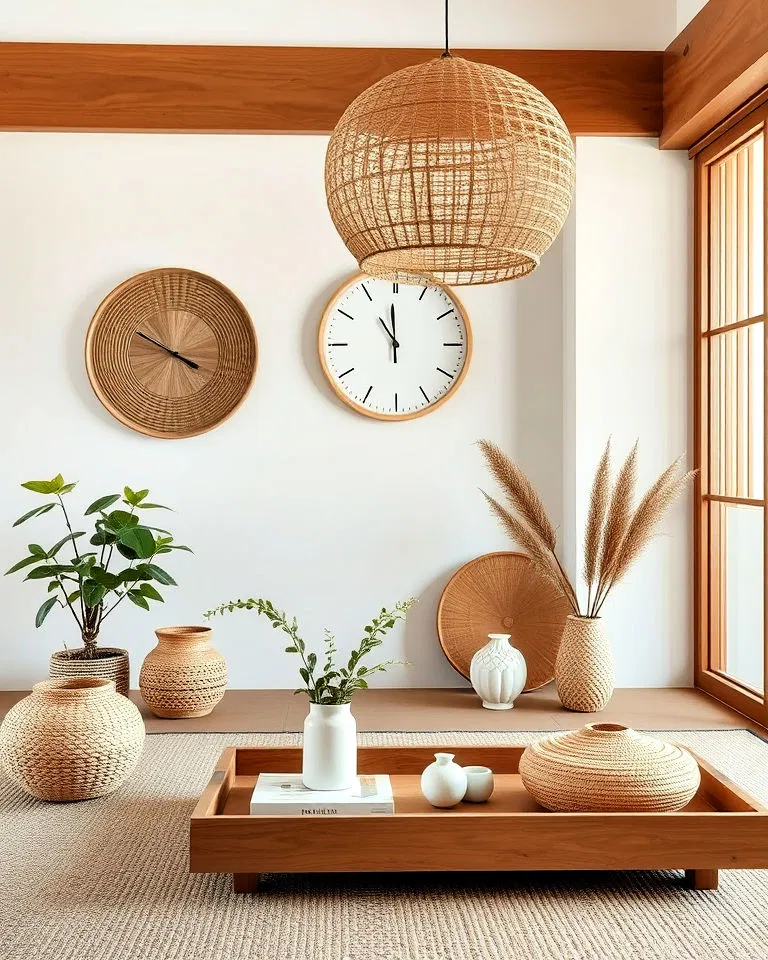
Choose decor items that serve a dual purpose, such as woven baskets, minimalist trays, or sleek clocks. Prioritize quality and durability to ensure these pieces contribute meaningfully to the space’s function and aesthetic. This approach aligns with Japandi’s sustainable and purposeful living ethos.
14. Integrate Built-In Storage Solutions

To uphold the minimalist spirit, incorporate built-in storage such as sleek cabinetry, hidden compartments, or under-bench drawers. Use natural wood finishes or neutral tones to blend these seamlessly into the room’s design, preserving clean lines and an uncluttered feel.
15. Highlight Soft Linen Textiles for Cozy Elegance
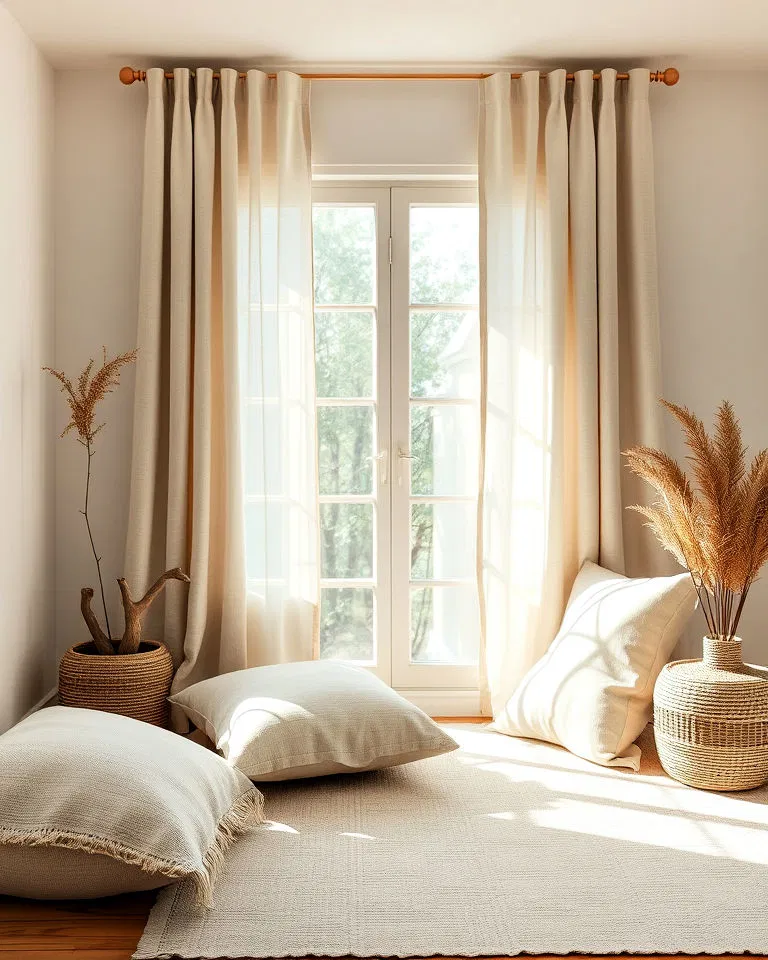
Incorporate linen fabrics in curtains, cushions, or throws to add warmth and texture. Their breathable nature and gentle wrinkles contribute a relaxed yet refined feel, perfectly complementing Japandi’s natural and simple aesthetic.
16. Choose Minimalist Sofas and Chairs for Functional Comfort
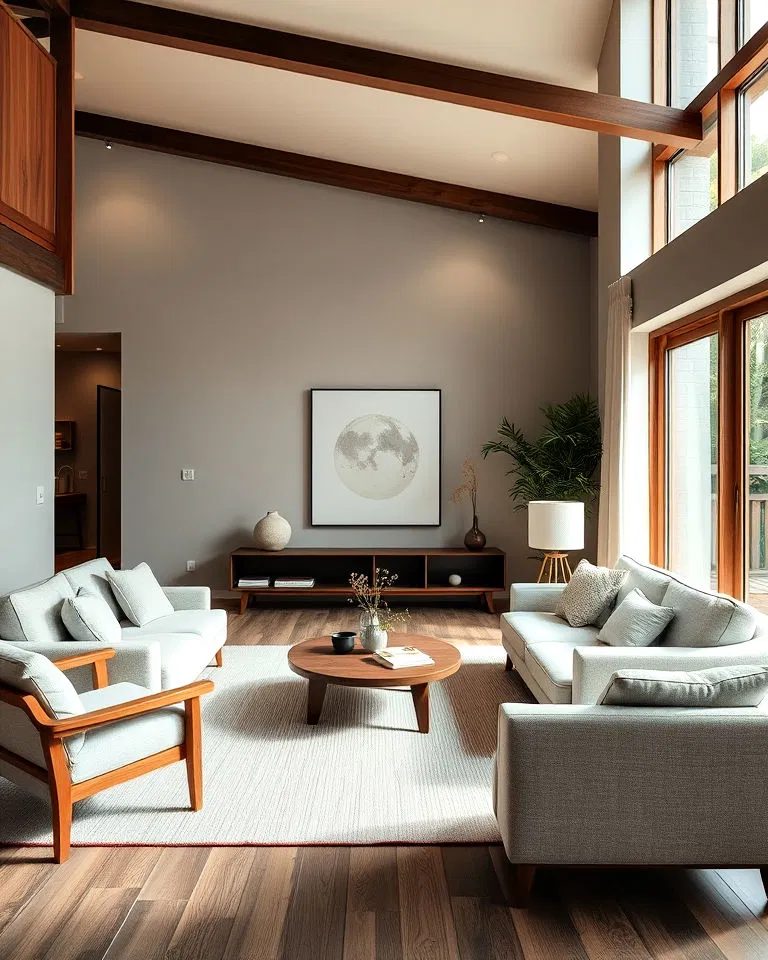
Opt for seating with clean, simple lines and neutral upholstery in materials like linen, cotton, or soft leather. Low-profile designs foster openness and balance, ensuring the space remains inviting without excess.
17. Incorporate Stone and Concrete Accents for Textural Contrast

Elements like stone coffee tables, concrete countertops, or decorative objects introduce raw, organic textures that enrich Japandi interiors. When paired with warm wood and soft textiles, these materials create a sophisticated interplay of contrasts.
18. Embrace Wabi-Sabi Decor Elements
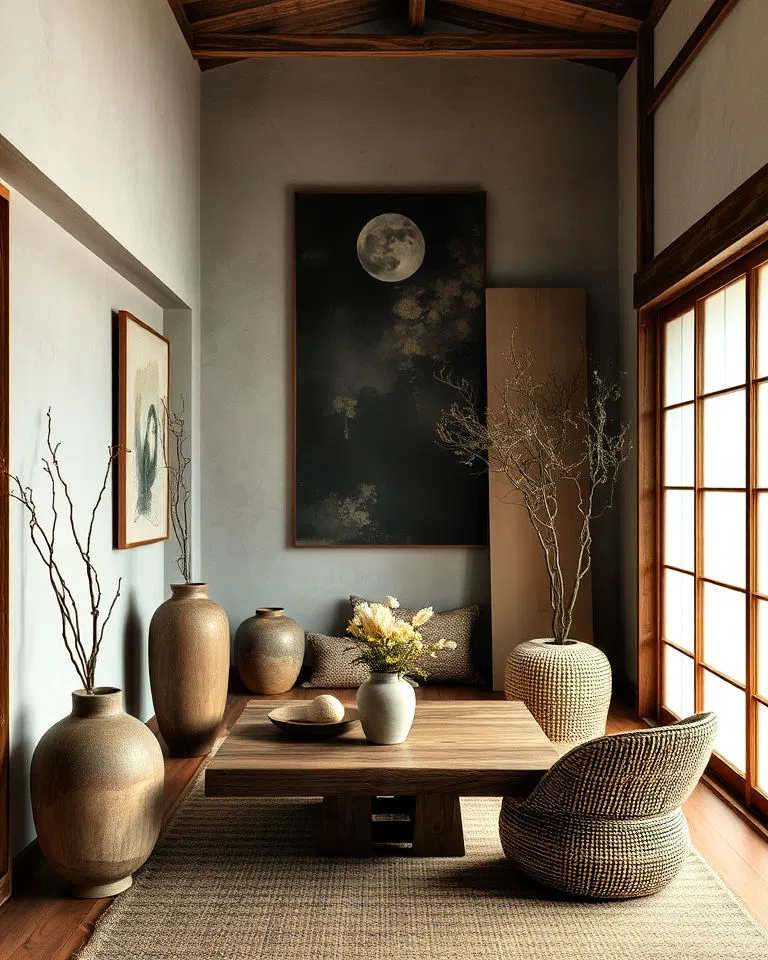
Celebrate the beauty of imperfection with wabi-sabi-inspired decor such as asymmetrical pottery, weathered wood, or handwoven textiles. These authentic pieces add depth and character, reinforcing the serene, lived-in ambiance of Japandi spaces.
19. Harmonize Scandinavian and Japanese Dining Sets
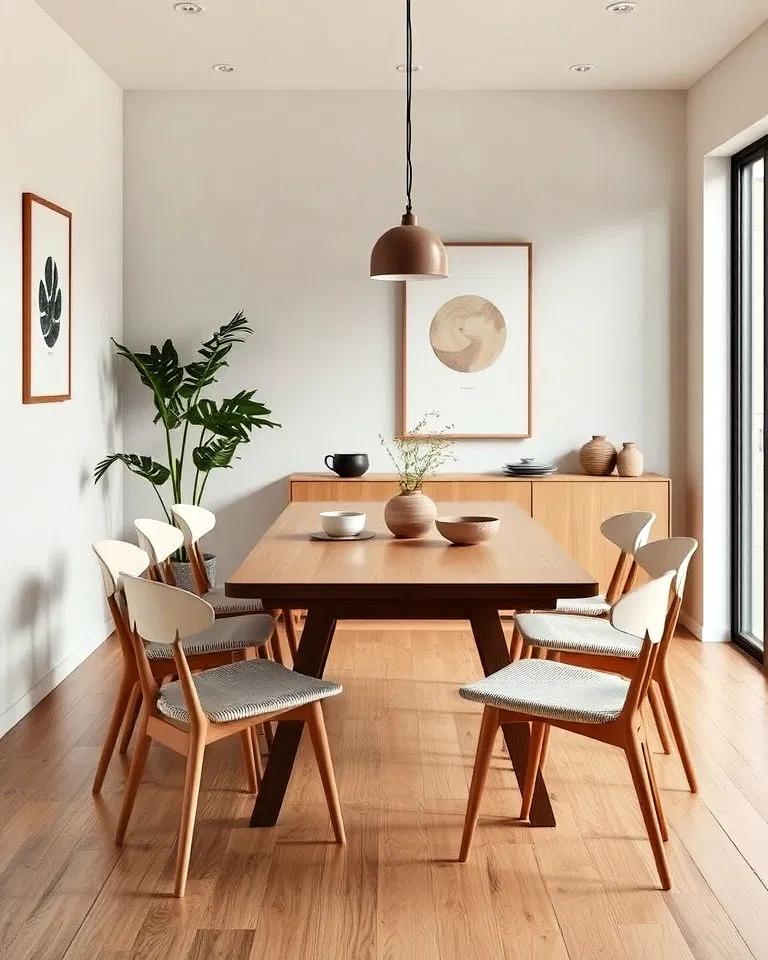
Create a dining space that balances sleek Scandinavian tables with minimalist Japanese chairs in neutral shades. Complement with natural tableware like ceramic or stone to enhance the organic, functional elegance ideal for both casual meals and special gatherings.
20. Emphasize Open-Concept Layouts for Flow and Light
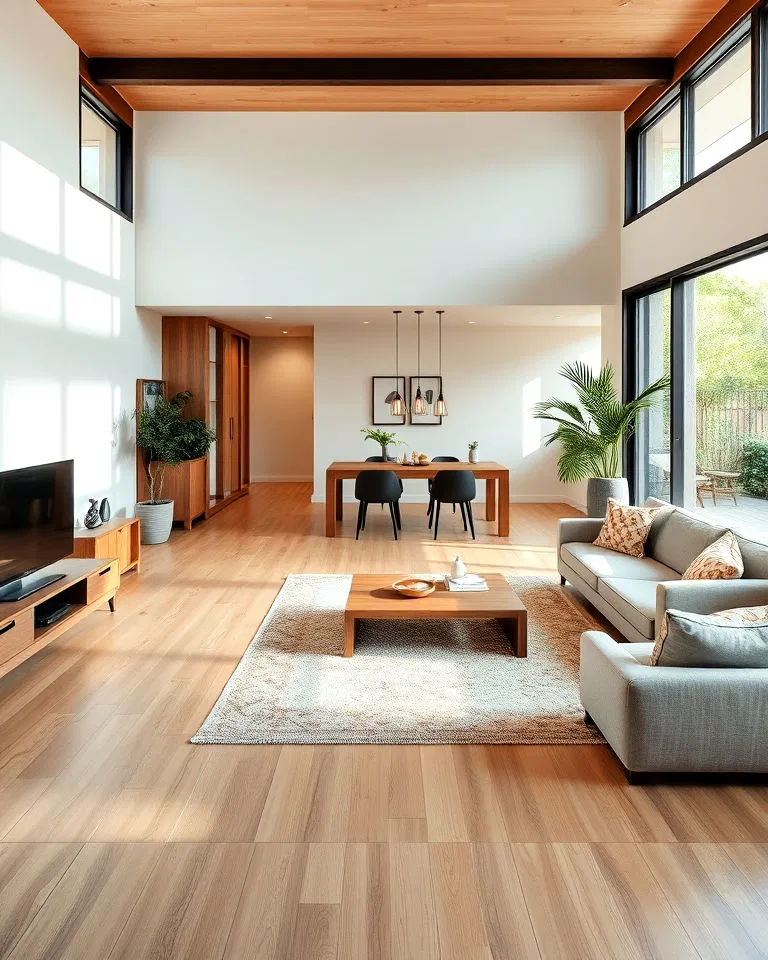
Open floor plans enhance the spacious, airy feel of Japandi homes by minimizing barriers between living, dining, and kitchen areas. Use rugs or furniture placement to subtly delineate zones while maintaining a cohesive, flowing environment that supports modern living.
21. Select Low-Maintenance Plants for Easy Nature Integration
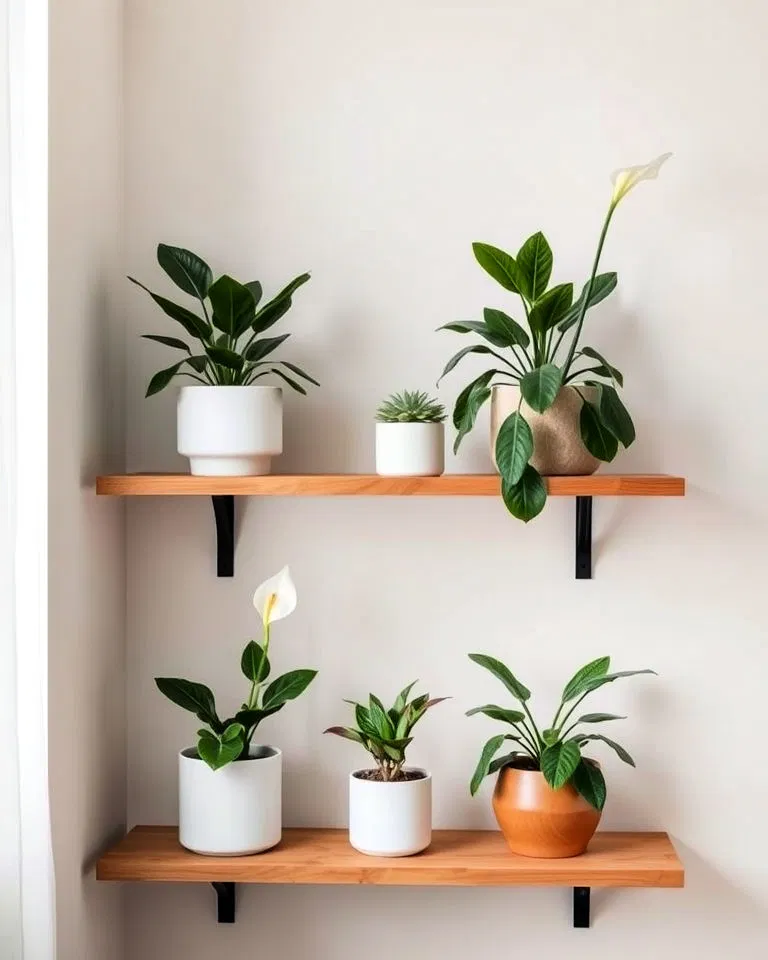
Plants like succulents, peace lilies, or snake plants thrive with minimal care and complement Japandi’s minimalist decor. Strategically place them on shelves or in corners to infuse vitality and reinforce the design’s natural connection.
22. Incorporate Warm Ambient Lighting Using Floor Lamps
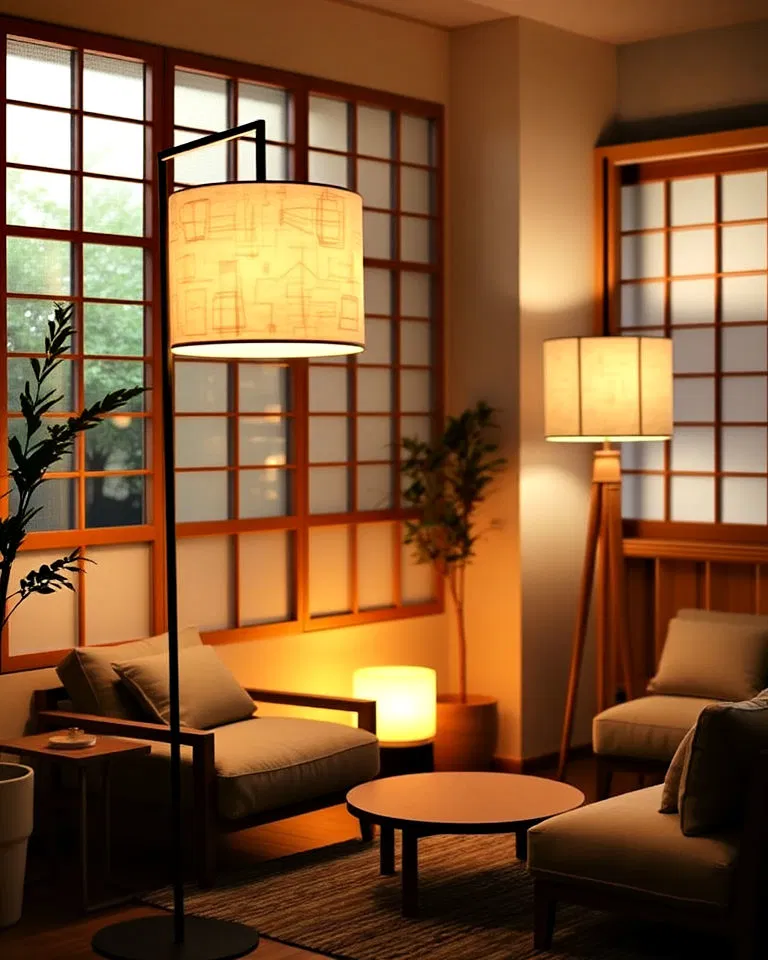
Floor lamps with simple geometric shapes and shades made from natural materials like paper or fabric provide soft, inviting illumination. Position them near seating or reading areas to enhance the cozy, tranquil atmosphere characteristic of Japandi design.
23. Integrate Natural Stone Elements in Bathrooms
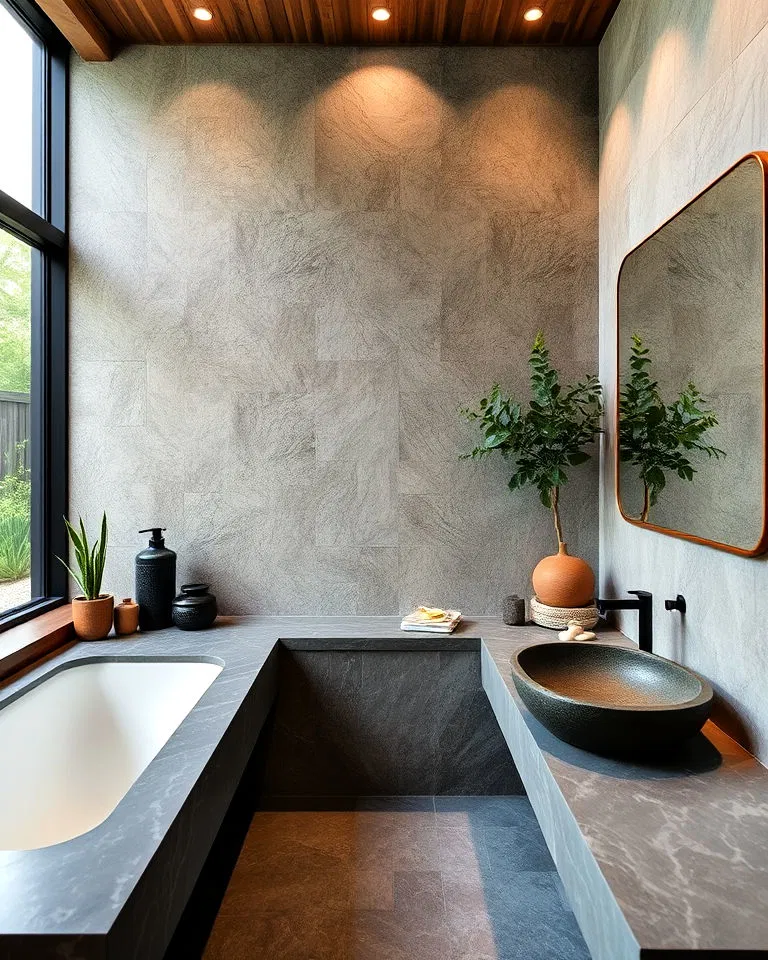
Incorporate materials like slate or travertine for countertops, sinks, or shower walls to evoke a spa-like serenity. Paired with wooden accents and soft textiles, natural stone transforms bathrooms into peaceful retreats that embody Japandi’s harmonious blend of cultures.
24. Choose Sustainable and Eco-Friendly Materials

Mindful consumption is at the heart of Japandi design. Opt for eco-conscious materials such as bamboo, reclaimed wood, and organic fabrics to furnish your home. These choices not only support sustainability but also ensure your space remains timeless and authentic.
25. Feature Minimalist Window Treatments for Light and Privacy
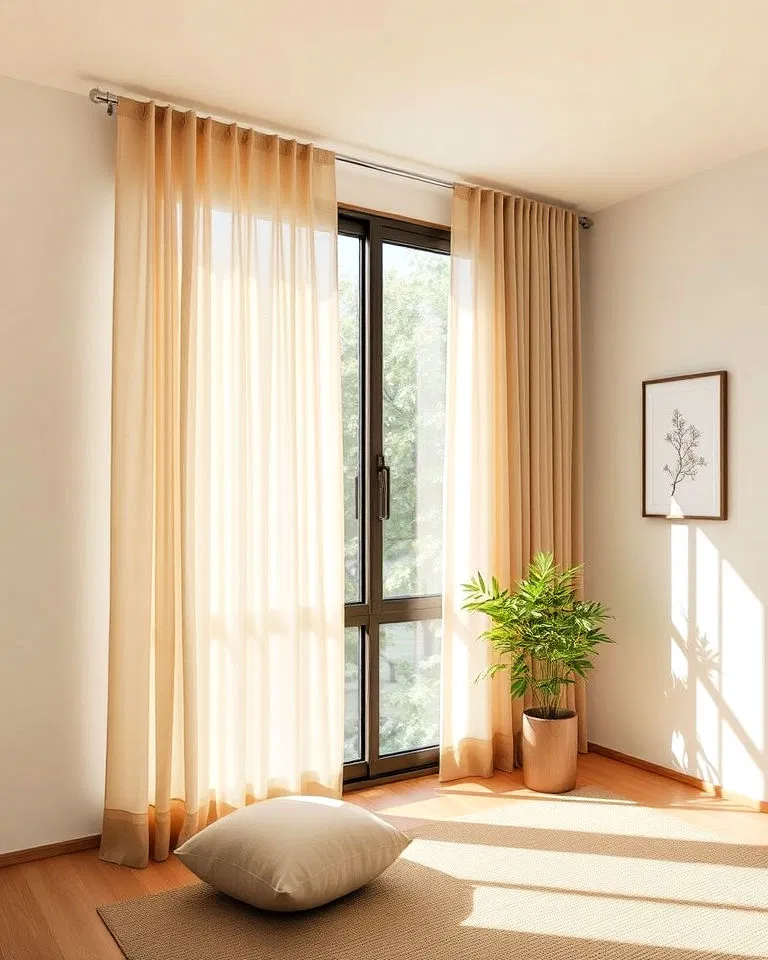
Sheer curtains or roller blinds in neutral tones allow soft natural light to permeate while providing privacy. These simple treatments maintain the uncluttered, airy feel essential to Japandi interiors.
26. Layer Textiles to Add Depth and Comfort
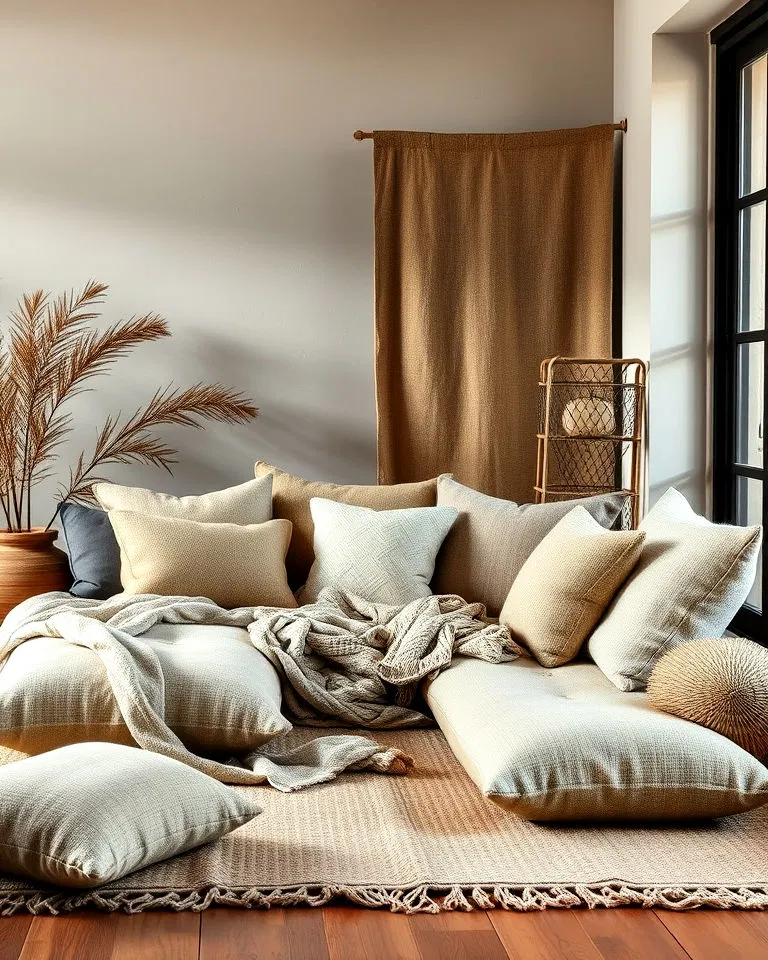
Combine throws, cushions, and rugs in complementary textures and muted colors. Materials like wool, cotton, and linen introduce warmth and tactile richness, making the space inviting without compromising simplicity.
27. Design Minimalist Kitchens for Functional Elegance
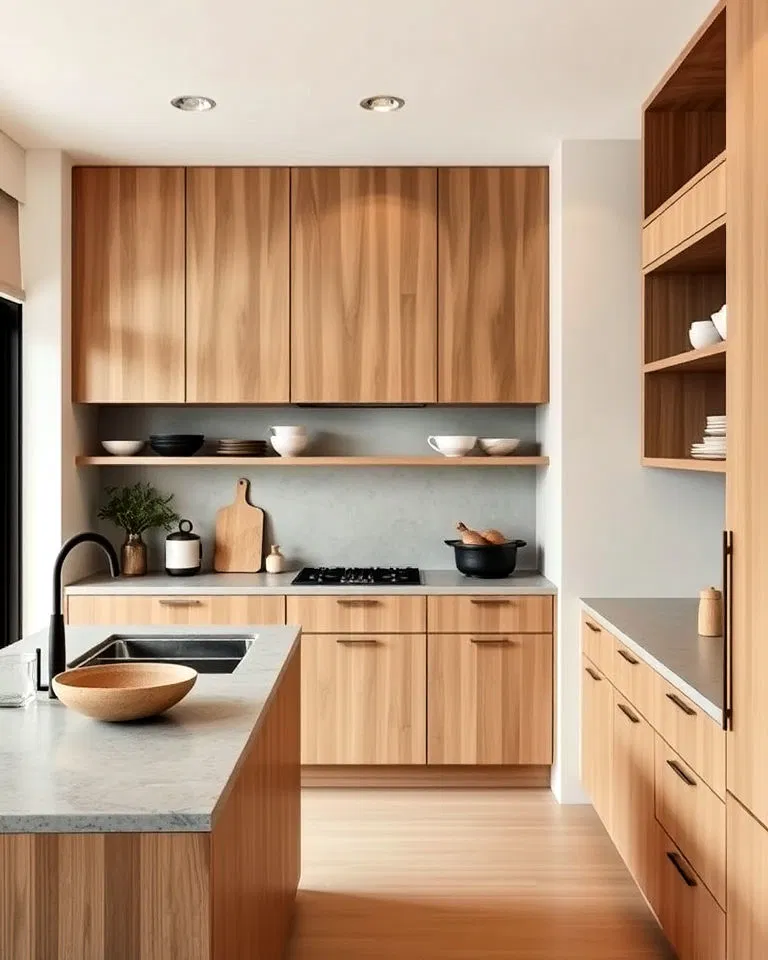
Japandi kitchens emphasize clean lines and practicality. Choose cabinetry in natural wood or matte finishes paired with stone countertops. Open shelving can display beautiful yet functional items like ceramics or glassware, creating an uncluttered and efficient cooking space.
28. Select Accent Pieces with Matte Finishes
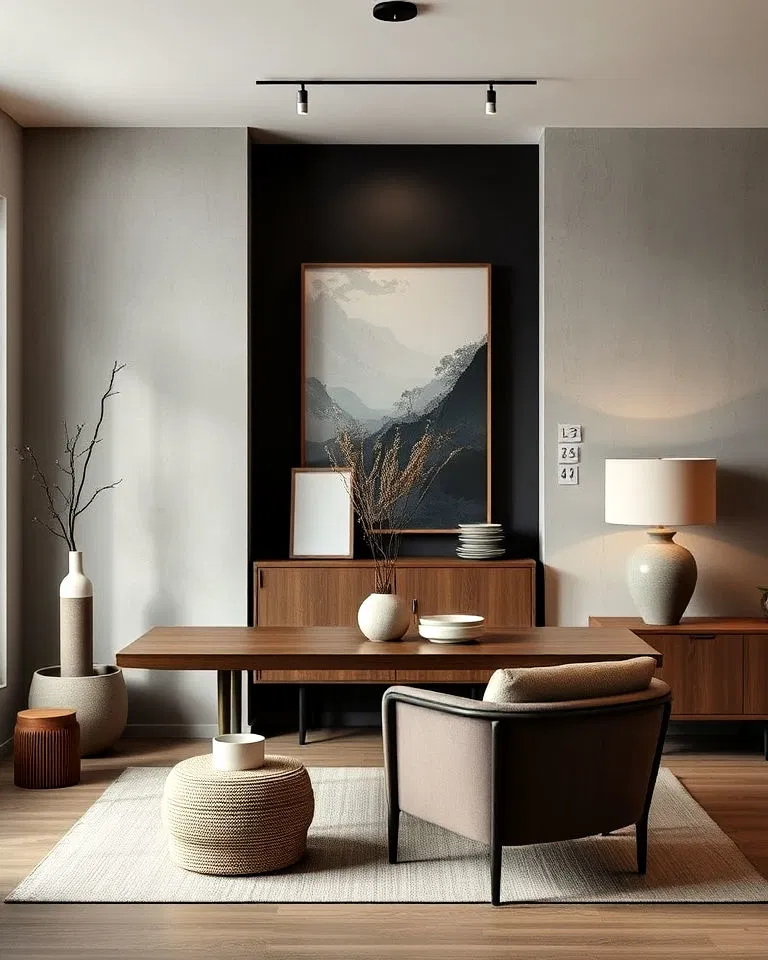
Matte finishes on ceramics, metal fixtures, or painted furniture add subtle sophistication. These understated surfaces blend seamlessly with Japandi’s minimalist ethos, lending a modern yet timeless quality to the space.
29. Incorporate Modular Furniture for Versatility

Modular pieces like sectional sofas or stackable tables offer adaptability for evolving needs. Their sleek, minimalist designs complement Japandi’s aesthetic while maximizing functionality, especially in compact living spaces.
30. Maximize Natural Light with Expansive Glass Windows
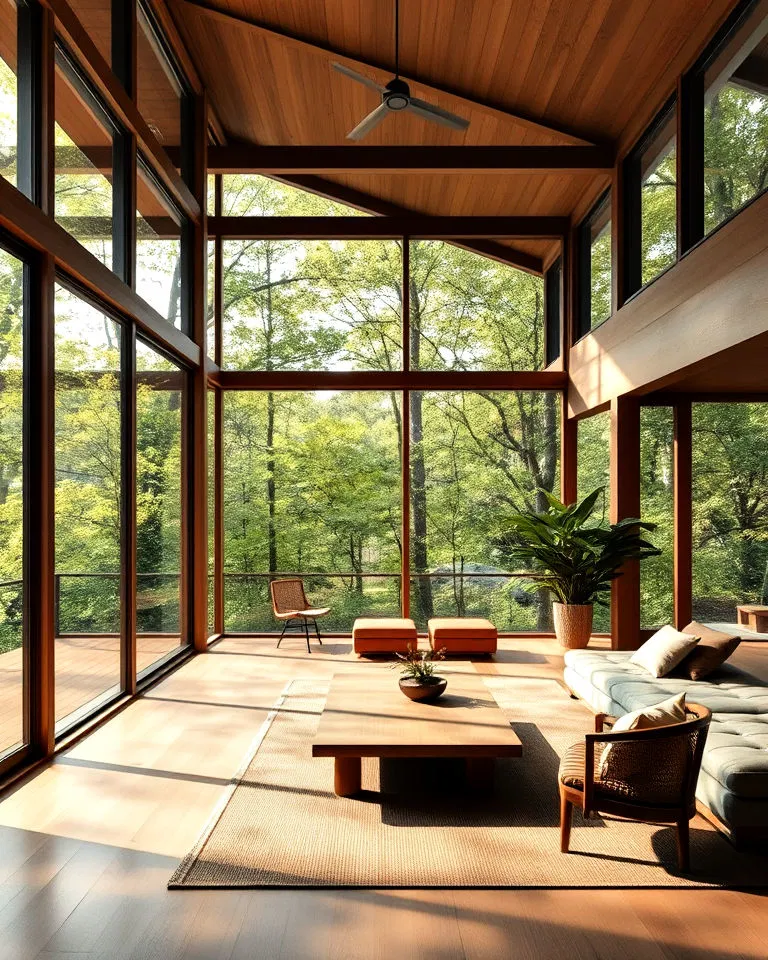
Floor-to-ceiling glass windows dissolve the boundary between indoors and outdoors, flooding interiors with natural light and framing views of greenery. Simple wooden frames add warmth, reinforcing Japandi’s harmonious relationship with nature.
31. Create Wall Niches for Minimalist Displays

Recessed wall niches offer a sleek way to showcase ceramics, plants, or books without cluttering surfaces. Painted in neutral shades or left in natural wood, they add subtle depth and functionality while maintaining a clean look.
32. Highlight Exposed Wooden Beams for Rustic Warmth

Whether structural or decorative, exposed wooden beams introduce texture and warmth. Paired with neutral walls and minimalist furnishings, they create a balanced fusion of Japanese simplicity and Scandinavian rustic charm.
33. Choose Minimalist Bedding for Serene Bedrooms

Japandi bedrooms favor bedding in neutral tones made from natural fabrics like cotton or linen. Layer with textured pillows or throws to add subtle comfort while preserving the uncluttered, tranquil atmosphere.
34. Incorporate Large, Low Coffee Tables for Grounded Spaces

Choose coffee tables crafted from natural wood or stone with simple, clean lines. Their low profile complements seating arrangements and reinforces the grounded, functional nature of Japandi living areas.
35. Use Simple Geometric Patterns for Subtle Texture

Incorporate understated geometric designs like stripes or grids through rugs, cushions, or throws. These patterns add modern flair and visual interest without disrupting Japandi’s minimalist harmony.
36. Opt for Recessed Lighting to Maintain Clean Lines

Recessed lighting fixtures installed in ceilings or under cabinets provide soft, ambient illumination without bulky hardware. This lighting style preserves the seamless, uncluttered look of Japandi interiors while enhancing warmth.
37. Add Bamboo Accents for Sustainable Style
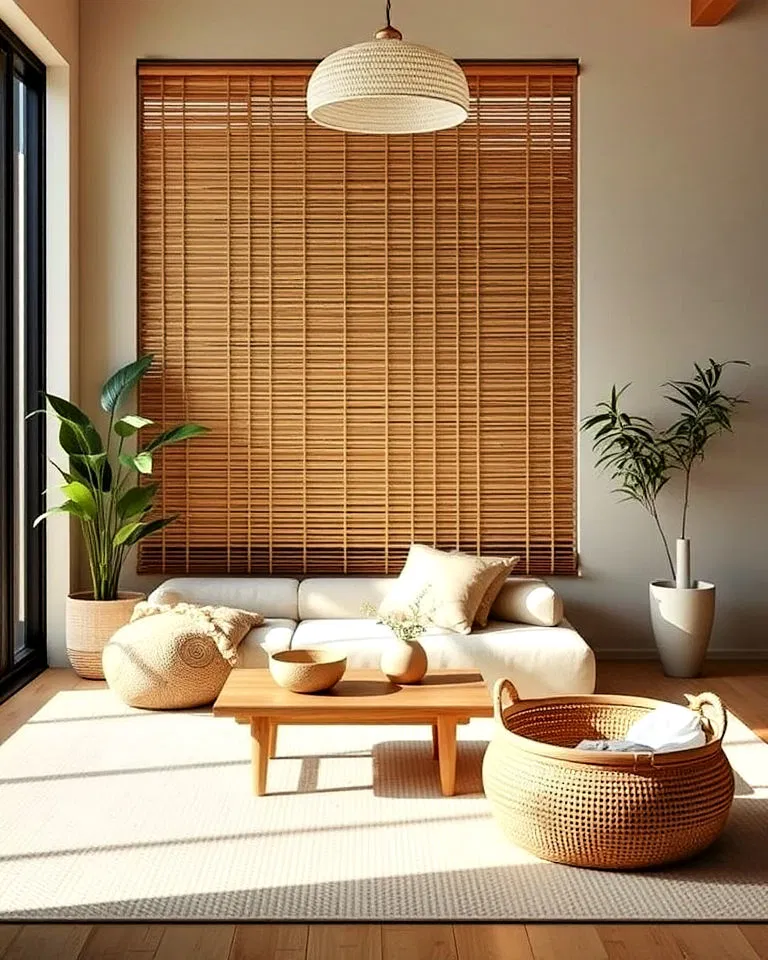
Bamboo’s light color and eco-friendly nature make it an ideal material for furniture, blinds, or decorative items like trays and baskets. Its versatility complements both Japanese and Scandinavian design elements, reinforcing Japandi’s commitment to natural materials.
38. Use Large Mirrors to Amplify Space and Light
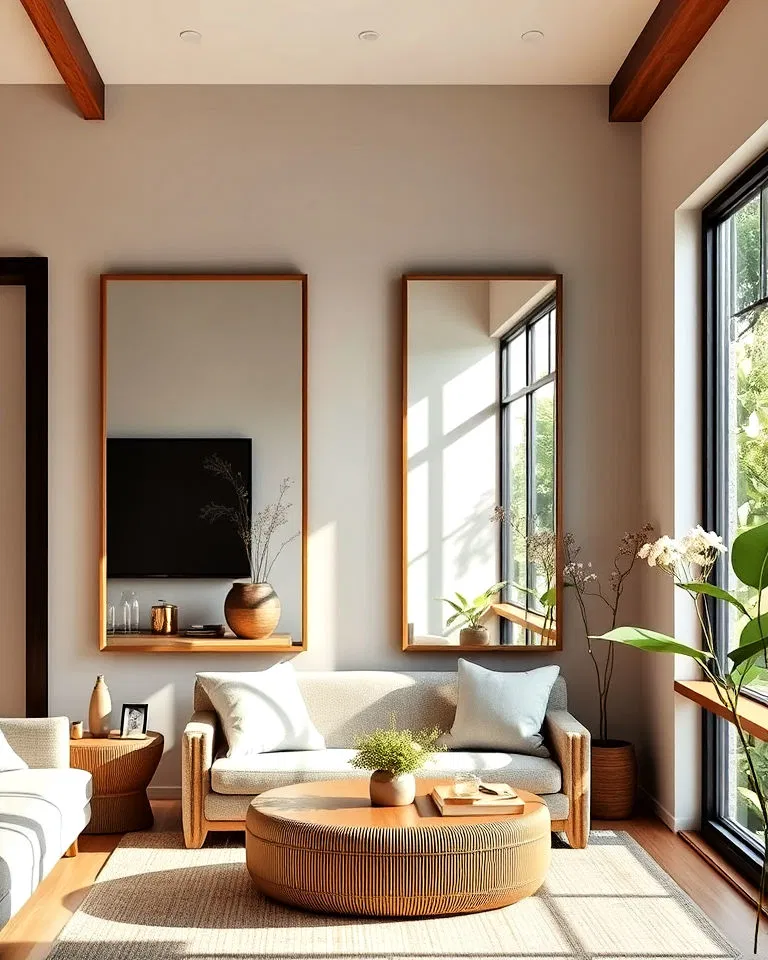
Strategically placed large mirrors with slim wooden or metal frames create the illusion of expanded space and reflect natural light. Positioning them opposite windows maximizes brightness and enhances the open, airy feel central to Japandi design.
39. Choose Minimalist Storage Baskets for Organization

Storage baskets made from natural fibers like rattan or seagrass offer practical organization while adding texture. Their earthy tones and simple shapes blend effortlessly with Japandi’s aesthetic, keeping spaces tidy without sacrificing style.
40. Incorporate Zen-Inspired Water Features for Tranquility
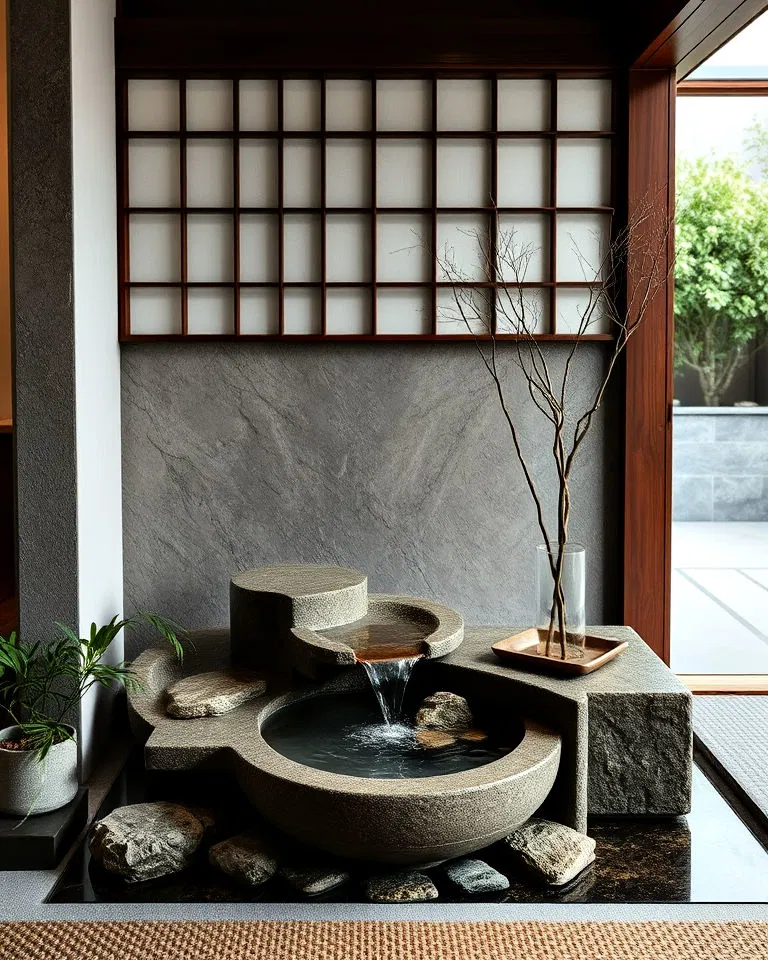
Small indoor fountains or water basins crafted from stone or ceramic introduce soothing sounds that enhance the meditative quality of Japandi interiors. These natural elements foster balance and serenity, perfectly embodying the style’s peaceful philosophy.
Conclusion
Japandi interior design transcends fleeting trends, offering a timeless blueprint for creating spaces that harmonize elegance with practicality. By merging Japanese minimalism with Scandinavian warmth, this style crafts homes that feel serene, purposeful, and deeply connected to nature. Whether through the use of natural materials, calming color schemes, or intentional decluttering, these ideas provide a roadmap to infuse your living environment with tranquility and enduring style. Ready to embark on your Japandi journey? Begin integrating these elements today to cultivate a peaceful and sophisticated home that stands the test of time.
Key Takeaways:
- Minimalism Meets Warmth: Japandi fuses Japanese simplicity with Scandinavian comfort, emphasizing clean lines, natural textures, and muted palettes.
- Natural Materials: Wood, stone, bamboo, and organic fibers connect interiors to nature while supporting sustainability.
- Functional Design: Every piece serves a purpose, promoting clutter-free, intentional living spaces.
- Neutral and Earthy Colors: Soft whites, beiges, grays, and greens create calming, harmonious environments.
- Balanced Contrasts: The style blends soft textiles with raw elements like stone or concrete for depth.
- Nature Integration: Plants, expansive windows, and Zen water features enhance the natural ambiance.
- Mindful Decor: Wabi-sabi-inspired ceramics, minimalist lighting, and simple art celebrate imperfection and simplicity.
- Smart Storage: Built-in and modular furniture maintain minimalism while maximizing utility.
Next Steps to Transform Your Home:
- Clear Out Clutter: Start by decluttering to create open, intentional spaces.
- Introduce Natural Elements: Add wooden furniture, bamboo accents, and organic textiles.
- Adopt a Neutral Palette: Use muted tones like beige, gray, and white to establish a calming base.
- Bring in Greenery: Incorporate low-maintenance plants in minimalist pots to enliven your space.
- Invest in Minimalist Furniture: Select functional, low-profile pieces with clean lines.
- Enhance Lighting: Use warm pendant lights or floor lamps to create cozy atmospheres.
- Personalize with Decor: Add wabi-sabi ceramics, textured rugs, and subtle geometric patterns.
- Plan Your Redesign: Focus on key areas like the living room, bedroom, or kitchen for gradual transformation.
For those looking to source quality natural wood furniture, neutral color palettes, or low-profile furniture, Amazon offers a wide selection to help you bring Japandi style into your home effortlessly.




